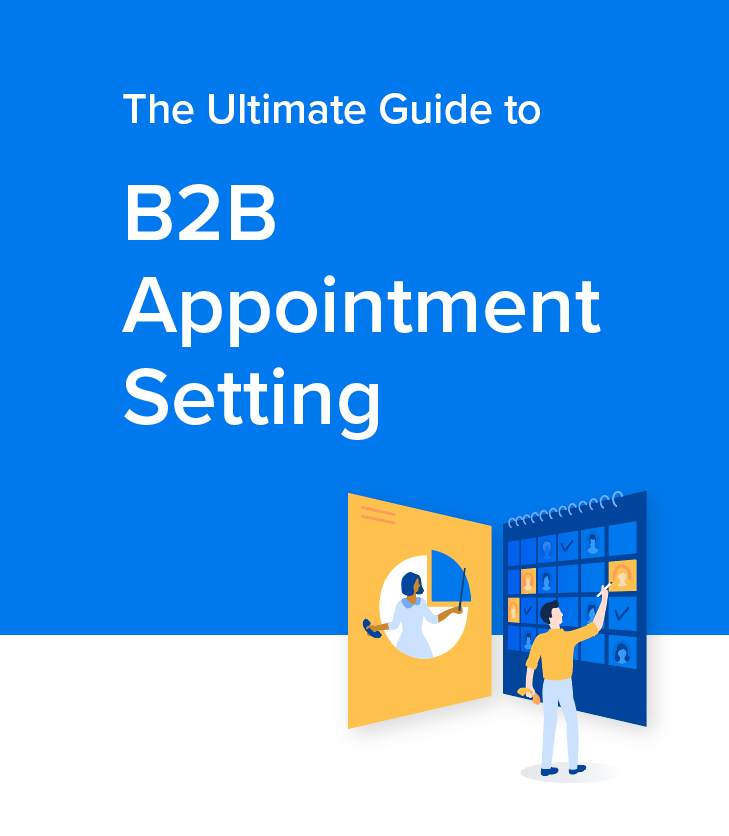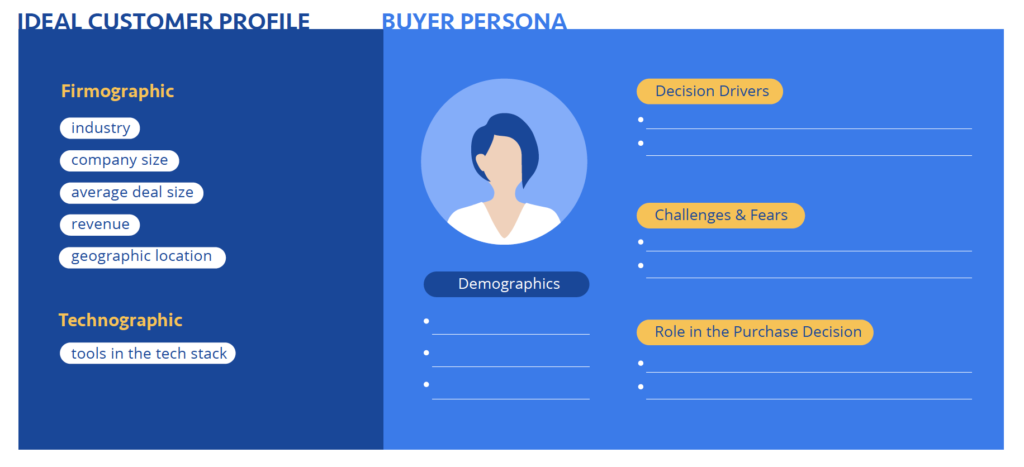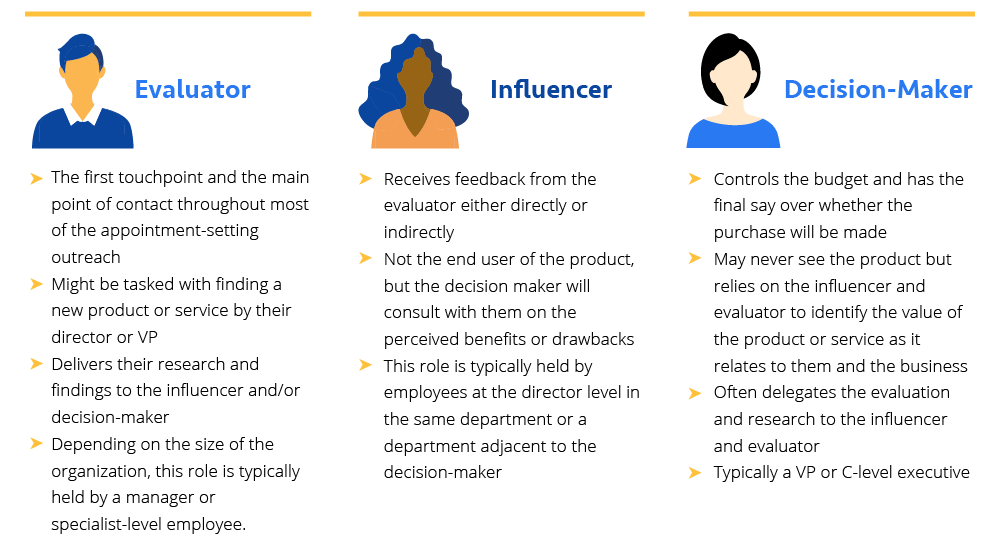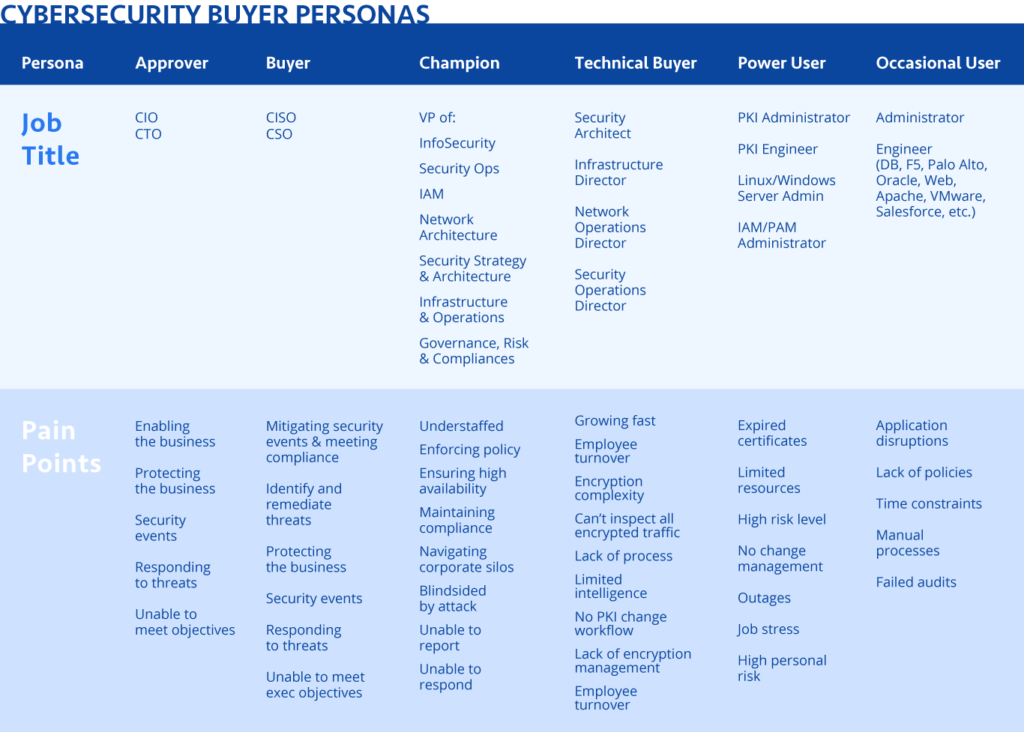Connect with a Consultant
Fill out your information with the form provided and one of our team members will reach out to you shortly.

This post was originally published in July 2018 and has been updated for accuracy and comprehensiveness.
In the previous chapter, we discussed developing your B2B Ideal Customer Profile. Now, it’s time to understand how to find decision-makers for B2B sales prospecting. From there, you can start tailoring your messaging to inspire conversions.
In this chapter, we’ll go over how to:

Don’t have time to read the full guide right now? Download the Ultimate Guide to B2B Appointment Setting to read at your convenience.
Before you reach for the phones, take a moment to answer the following questions:
Let’s say you’re in the cybersecurity industry. While everyone can benefit from your ransomware detection tool, the ultimate users are the I.T. specialists installing your software on their company devices. These I.T. specialists will need their upper management’s approval to invest in your solution.
Therefore, you should be targeting managerial roles with “security,” “technology,” or even “information” in their title, such as:
VP of Security Operations
Chief Technology Officer
Chief Information Officer
Once you’ve identified which roles to target, you can start developing your B2B buyer personas.
EBQ Tip: There is a direct correlation between your average sales price and the seniority of the role with decision-making authority.
If your average selling price is lower, then the rank in decision-making who has the final say is lower as well — meaning you might not need to reach a C-suite member to convert a prospect.


The second step in mastering how to find decision-makers for your business is to start developing your B2B buyer personas.
Unlike the Ideal Customer Profile, the B2B Buyer Personas drill down on the individuals responsible for having a final say in the purchasing process.
Start by identifying their decision drivers. These are your persona’s overall goals and attitudes toward purchasing your solution. For example, a VP of Security Operations may be excited to learn more about the logistics of your cybersecurity solution, while a Chief Executive Officer may just want to hear the bottom line.
From there, make a list of their challenges and fears. These are concerns that keep them up at night, so there is some urgency to solving these pain points. Going back to the cybersecurity example, a Chief Technology Officer may be concerned about how a solution can properly identify and mitigate an active cybersecurity attack. Meanwhile, the Chief Executive Officer may be more concerned about potential ROI.
We wrote an in-depth article on the 10 Components of a Well-Defined Buyer Persona. In the post, we’ll walk you through how to fill out the buyer persona card below.

Now that you’ve created your B2B buyer personas, you can start breaking down the B2B buying process to identify how to approach your prospects.
From our experience, the average company has two key decision-makers. But you should still pay attention to everyone else before speaking to the two final decision-makers.
In every B2B buying committee, there are three roles:
Evaluator (also known as the Gatekeeper)
Influencer
Decision-maker
Each persona category plays a unique role on the buying committee and in the overall decision-making process. Depending on which persona you’re speaking to, your SDR team should tailor their messaging to resonate with that role.
Each role has different needs and priorities, and it’s the SDR’s job to identify what those are. We’ll talk more about identifying the priorities of different roles later in this guide when we discuss how to develop cold-calling scripts.
One thing that SDRs sometimes forget to do is to consider the internal dynamics that can affect the purchase decision.
For us to identify the needs of the prospect, we need to understand what makes these three sales personas unique and how they work together to come to a consensus.

From there, you’ll be able to create a comprehensive list of buyer personas and their general pain points you should speak to. Here’s an example of what Cybersecurity Buyer Personas can look like:

By understanding the key personas you’re prospecting for, you can create an effective cold-calling script to speak to their unique pain points and decision drivers.
You’ll need to create a unique cold-calling script for each role within the purchasing decision for the best conversion rates. We’ll go over how to write cold-calling scripts in Chapter 5 of this guide.
For further reading, consider checking out “Best Cold Calling Scripts for Software Sales”. While it’s written from a software sales perspective, you can still learn how to take the basic structure of our cold-calling scripts to develop your own.
It is finally time to get on the phone to find decision-makers within your target company. Typically, high-level executives have a gatekeeper — an employee who is responsible for screening every call to help save their manager’s time.
These employees screen dozens to hundreds of calls per day, so the first step is to briefly explain why you’re calling and politely ask who you should be speaking to. For example:
We recommend not pitching your product to them — even if they ask you what you’re selling. This might give them another opportunity to object instead of transferring you, so stick to a quick value proposition.
Finally, remember that these employees are often well-connected within their companies, so take note of their names and leverage their help in finding the right contacts as you build out the account in your database.
For more information on gatekeepers, check out “How to Get Past the Gatekeepers.” We outline how to keep the evaluators on the phone and convince them to advocate for your solution down the line.

Don’t have time to read the full guide right now? Download the Ultimate Guide to B2B Appointment Setting to read at your convenience.
By dissecting who is in your prospect’s buyer committee, you’ll be able to find decision-makers more easily. To find these decision-makers, make sure you:
Not everyone has the time to slowly build out their cold-calling strategy. That’s why many organizations choose to outsource their sales development team. By partnering with EBQ, you’ll be able to set more sales appointments faster — all for a fraction of the cost of building an internal SDR team. Visit our B2B Appointment Setting page to learn more.
Fill out your information with the form provided and one of our team members will reach out to you shortly.
6800 Burleson Road
Building 310, Suite 265
Austin, TX 78744
©EBQ 2023 All rights reserved.
Tell us about yourself and we’ll get in touch shortly.
